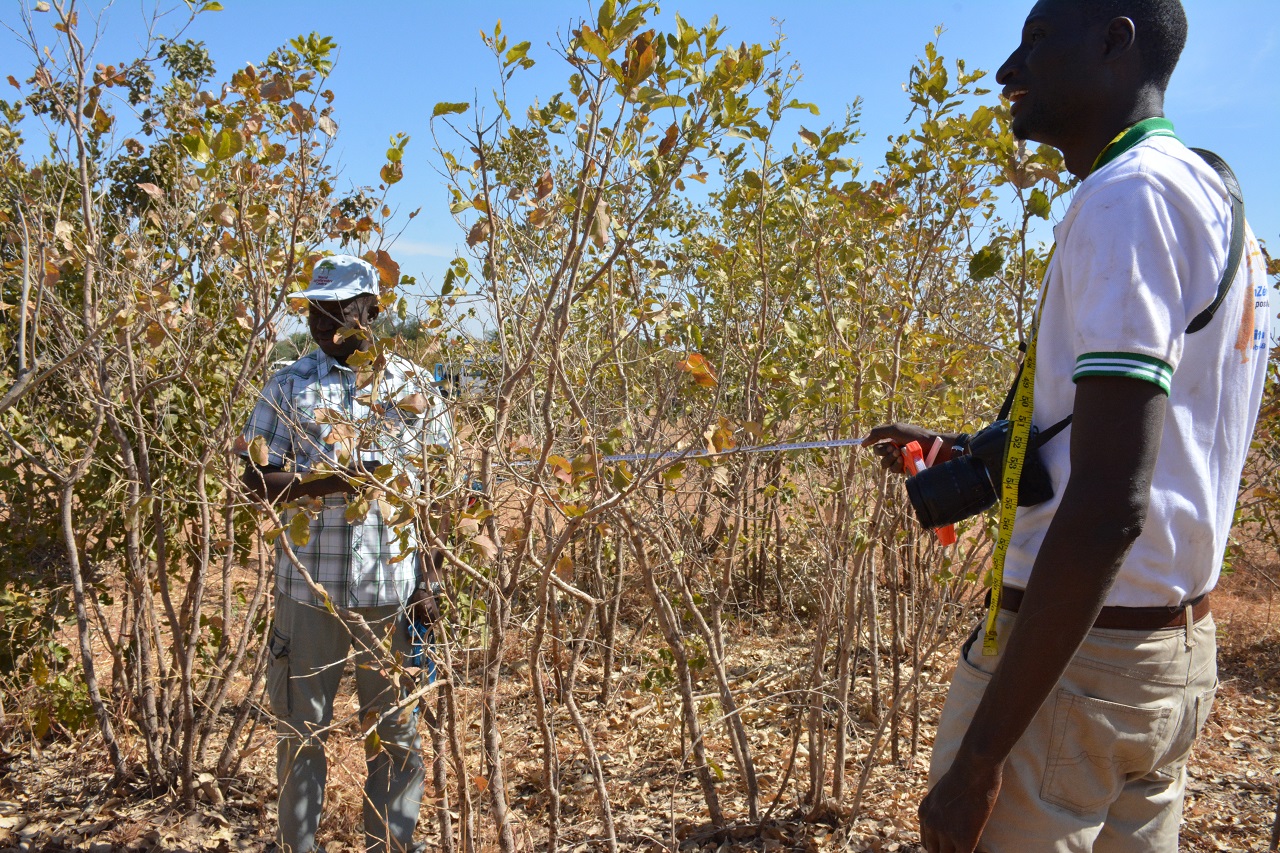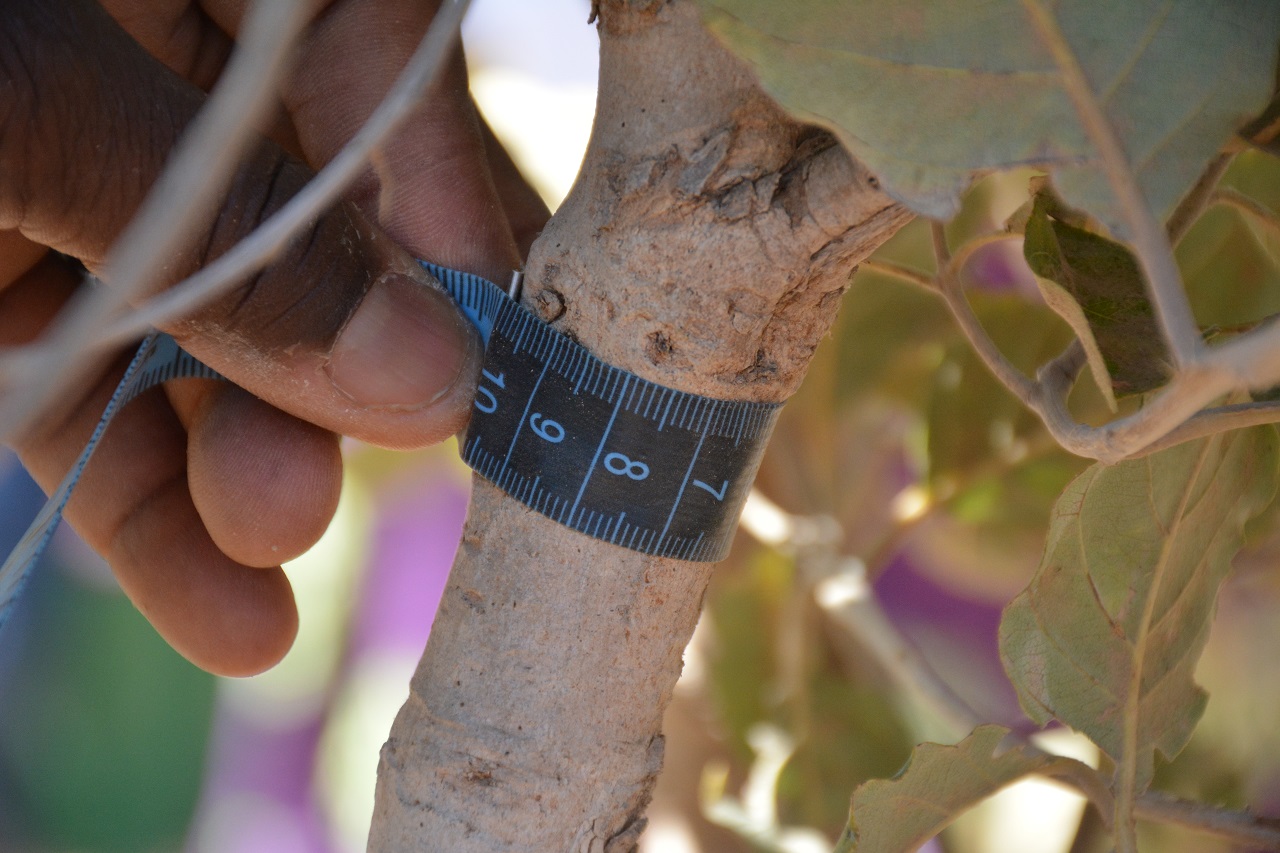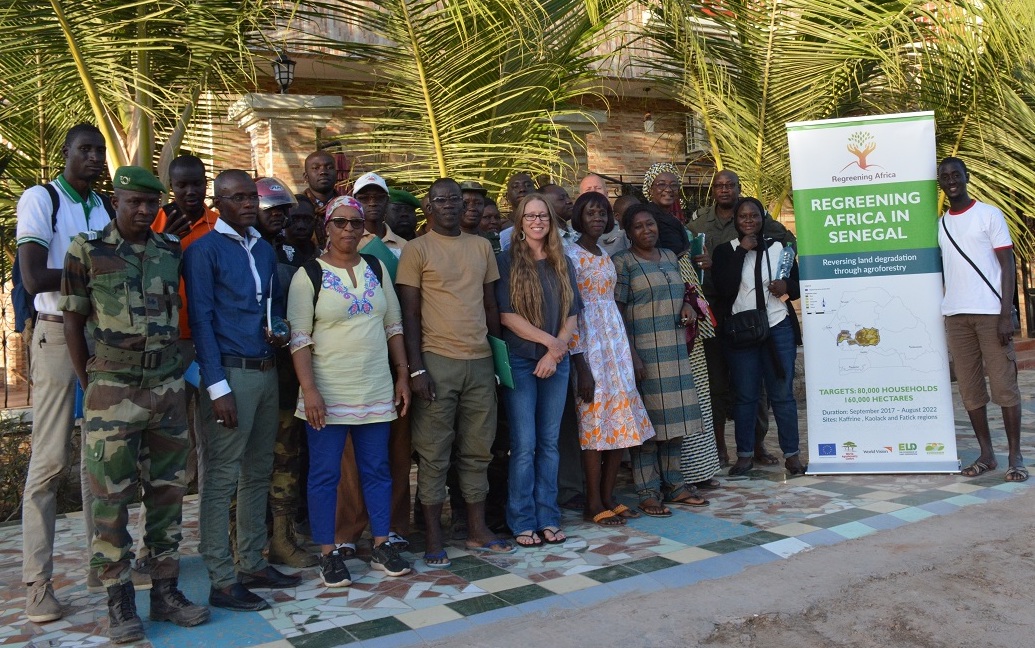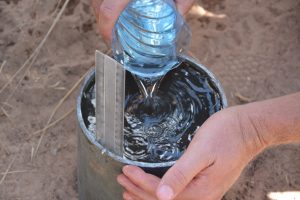
Patrice Savadogo (World Agroforestry) and Ibrahim Khalil Sabaly (Ministry of Agriculture and Rural Development, Senegal) during the Land Degradation Surveillance Training. Photo: World Agroforestry/ Gilberte Koffi
The Framework is helping farmers and governments monitor the progress of regreening efforts and the overall health of their land.
The Land Degradation Surveillance Framework has been designed by World Agroforestry to provide a biophysical baseline at landscape level that supports the monitoring and evaluation of land degradation and the effectiveness of land restoration measures over time. Senegal has now been trained in its use.

Patrice Savadogo (World Agroforestry) and Ibrahim Khalil Sabaly (Ministry of Agriculture and Rural Development, Senegal) during the Land Degradation Surveillance Training. Photo: World Agroforestry/ Gilberte Koffi
The Framework is a response to the need for consistent field methods and indicator frameworks to assess the health of landscapes. It has been applied across the global tropics, sporting one of the largest land-health databases in the world, with more than 30,000 observations.
Senegal is one of four Sahelian countries where Regreening Africa is being implemented, targeting 80,000 households to restore a total of 160,000 hectares. Recent training in use of the Framework will equip Senegal with surveillance and analytic tools on land-degradation dynamics, including social and economic dimensions, that support strategic decision-making and monitoring.
‘We think that at the end of this training, all technicians will be able to scale up the knowledge acquired,’ said Baba Ba, chief of the National Water and Forest Direction and president of the National Oversight and Coordination Committee of Regreening Africa in Senegal, during a training session for the Framework held 27 January to 2 February 2019 in Kaffrine. ‘I believe that it is key to move towards the creation of a national database that will generate information to guide and orientate farmers on land restoration.’

Participants at the Land Degradation Surveillance Framework training in Senegal. Photo: World Agroforestry/ Gilberte Koffi
Over time, the Framework’s global database has been enriched from countries that are deploying the tool. Regreening Africa Senegal partners will now be able to contribute to these critically important global datasets through data collection at Regreening Africa’s sites in Kaffrine, Kalolack and Fatick regions.
World Vision,which implements Regreening Africa in Senegal, has been working for many years in Kaffrine region. They have supported farmer-managed natural regeneration and other land-restoration practices, which have had proven results in Kaffrine, such as increases in crop yields, fodder and soil organic matter and decreases in erosion.

Participants at the Land Degradation Surveillance Framework training in Senegal. Photo: World Agroforestry/ Gilberte Koffi
Nevertheless, the expansion of the scale of these practices is still weak, encouraged by a non-conducive legal framework and weak institutional development, challenges that Regreening Africa will help to address through people trained in the use of the Framework. To this end, during the training, the 31 trainees from government agencies — including extension services for agriculture, forestry and livestock — local authorities, and national research institutes learned how to measure indicators of the health of an ecosystem, including vegetation cover, structure and floristic composition, historic land use, land degradation, soil characteristics — including soil organic carbon stocks for assessing potential for mitigating climate change — and infiltration capacity, as well as providing a monitoring framework to detect changes over time.
‘This is very important for us and the technicians who supervise farmers,’ agreed Ba. ‘It is designed to equip everyone with characterization methods and tools for the monitoring of soil health. This activity can be considered as part of the fight against climate change, as it will help improve not only the resilience of ecosystems but also that of populations.’
One of the key goals of Regreening Africa is to integrate research into development so that the selection of land-restoration practices and technologies is backed up by solid evidence. The outputs generated from use of the Framework will provide such evidence and, further, help explore the complex interactions between land management, regreening efforts and land health through ‘decision dashboards’ thathelp to target interventions more appropriately to suit diverse ecological, social and economic contexts.
Regreening Senegal is becoming possible thanks to the deployment of tools such as the Framework and the commitment of Senegal’s governments, farmers, communities and businesses to reverse land degradation.
With contributions from Leigh Winowiecki, Catherine Dembele, Patrice Savadogo, Susan Chomba and May Muthuri.
Regreening Africa is an ambitious five-year project that seeks to reverse land degradation among 500,000 households, and across 1 million hectares in eight countries in Sub-Saharan Africa. By incorporating trees into croplands, communal lands and pastoral areas, regreening efforts make it possible to reclaim Africa’s degraded landscapes.
This story was produced with the financial support of the European Union. Its contents are the sole responsibility of Regreening Africa and do not necessarily reflect the views of the European Union.
